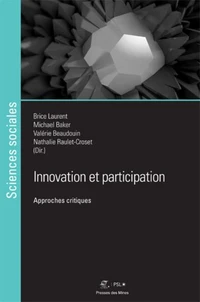How interventions based on objects-including chemicals, financial products, and consumer goods-offer a path to rethink European integration. Interventions based on objects, Brice Laurent claims, have become a dominant path for European policy-making. In European Objects, Laurent analyzes the political consequences of these interventions and their democratization. He uses the term "European objects" to describe technical entities that are regulated-and thereby transformed-by European policies.
To uncover the bureaucratic and regulatory intricacies of European governance, Laurent focuses on a series of these objects, including food products, chemicals, financial products, consumer goods, drinking water, and occupational environments. Laurent argues that taking European objects seriously offers a way to rephrase the dreams of harmonization and, eventually, rethink the constitutional strength of European integration. Laurent doesn't just clarify how European regulation works, but also explores ways to realize long-term objectives for European integration, such as a harmonized market or an objective expertise.
Regulation is best understood as "regulatory machinery" bringing together various types of legal constraints, material interventions on objects, and the imagining of desirable futures. Analyzing European objects enables Laurent to explore what regulation has become after years of evolution have made it a central component of the European policy world. He offers practical illustrations of how the regulatory machinery functions today.
If Europe succeeds at reinventing the terms of its legitimacy with objects that matter for the European publics, it will provide a telling demonstration that the opposition of expertise and populism is not the unavoidable fate of liberal democracies.
How interventions based on objects-including chemicals, financial products, and consumer goods-offer a path to rethink European integration. Interventions based on objects, Brice Laurent claims, have become a dominant path for European policy-making. In European Objects, Laurent analyzes the political consequences of these interventions and their democratization. He uses the term "European objects" to describe technical entities that are regulated-and thereby transformed-by European policies.
To uncover the bureaucratic and regulatory intricacies of European governance, Laurent focuses on a series of these objects, including food products, chemicals, financial products, consumer goods, drinking water, and occupational environments. Laurent argues that taking European objects seriously offers a way to rephrase the dreams of harmonization and, eventually, rethink the constitutional strength of European integration. Laurent doesn't just clarify how European regulation works, but also explores ways to realize long-term objectives for European integration, such as a harmonized market or an objective expertise.
Regulation is best understood as "regulatory machinery" bringing together various types of legal constraints, material interventions on objects, and the imagining of desirable futures. Analyzing European objects enables Laurent to explore what regulation has become after years of evolution have made it a central component of the European policy world. He offers practical illustrations of how the regulatory machinery functions today.
If Europe succeeds at reinventing the terms of its legitimacy with objects that matter for the European publics, it will provide a telling demonstration that the opposition of expertise and populism is not the unavoidable fate of liberal democracies.

 , qui est-ce ?
, qui est-ce ?